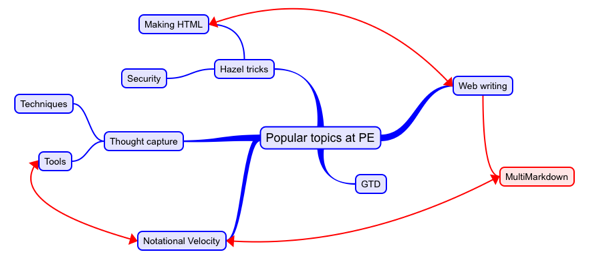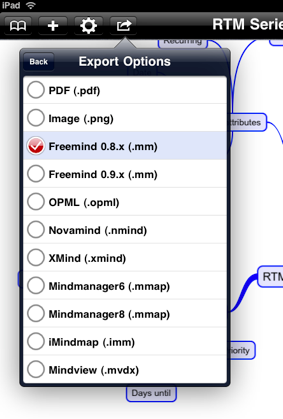Mind mapping on the iPad with iThoughtsHD
 Since first being introduced to it a few years ago, I’ve always liked the concept of mind mapping. I find that it’s the most efficient way to get ideas down onto paper – ideas that never arrive in a linear fashion.
Since first being introduced to it a few years ago, I’ve always liked the concept of mind mapping. I find that it’s the most efficient way to get ideas down onto paper – ideas that never arrive in a linear fashion.
A mind map can be like a thought laxative. Once it gets going, watch out – but in a really good way.
That said, I’ve always struggled with when to use mind maps and how to leverage those that I create. Taking notes in meetings where I don’t have an iPad or computer is probably my most common use of mind maps. Other times, the mood just strikes me – like when I just need to escape from a screen.
Mind mapping on paper
Mind maps are easy to create on paper. That’s the good part. The not-so-good is that paper-based mind maps don’t lend themselves to portability and pliability. To get the most out of paper mind map, you need to rework the information captured in its web at some point.
Often, my paper mind maps result in a collection of tasks and reference material. I’ll usually put little boxes to next to each task. Sometimes that’s enough, and I’ll just begin working off that list.
Other times, I’ll manually type up tasks, reference information, and other ideas on the map so that they’re in an electronic format and can funnel into a dashboard with my other tasks and projects.
It’s this re-entry step that introduces the most inefficiency in a workflow precipitated by mind mapping. What if we could reduce the inefficiency of this re-entering step? What if we could eliminated it completely?
Thanks to the iPad, we can.
The iPad as a mind mapping tool
I was initially skeptical of mind mapping on the iPad. Could the interface really be frictionless enough to let me get ideas down fast and link them with the same ease as pen and paper? Can it really be productive, or is it just “fun” to do?
If you use an app called iThoughtsHD, the answer is yes.
The interface of iThoughtsHD is extremely intuitive and fluid. Creating nodes, moving them around, editing, etc. are all very natural and easy to do. There’s really no learning curve at all.
But in mind my that’s not the biggest selling point of iThoughtsHD.
Just because you can do something differently, shouldn’t in itself mean you should do that thing differently. In this case, we should be asking the question: What can I do with an iPad that I can’t do with pen and paper?
Back to those two Ps I just mentioned: portability and pliability. . .
The kicker:
iThoughtsHD is integrated with Dropbox, the brilliantly designed syncing service that is quickly becoming the de facto file system for the iPad. iThoughtsHD not only lets you quickly create mind maps, it lets you save them in a variety of formats.
Any of those options can be saved right into Dropbox. As soon as you connect to the internet with your Mac, PC, or other device, your maps are sitting right there waiting for you to edit further, copy information into / out of, or just reference.
FreeMind, the popular open source mind mapping application that works on both Macs and PCs, has been my electronic mind mapping tool of choice for a while. iThoughtsHD supports going to and from FreeMind’s format with ease. It also supports a number of other formats listed under the Export menu.
iPad apps that can access Dropbox score big points with me. As people increasingly use more and more electronic hardware, we have a greater need for instant data portability. That’s the niche Dropbox fills so beautifully.
Throw another one in the content creation column
Mind maps are a great example of how the iPad’s interface can be used to “invite” creative thinking more effectively than a traditional computer with a keyboard and mouse. The fact that your mind maps can swiftly travel from iPad to traditional computer makes it even more inviting.
In short, mind mapping is just another example of how the iPad can be used as a “content creation” tool.
Are you mind mapping on the iPad? What app(s) are you using?

